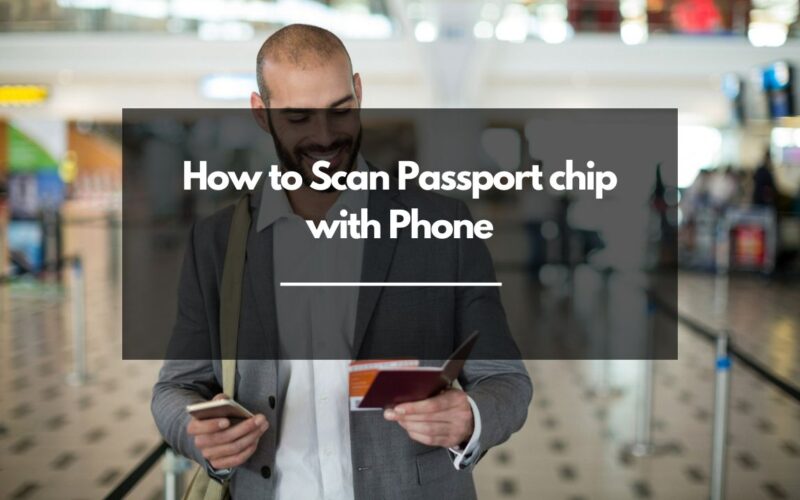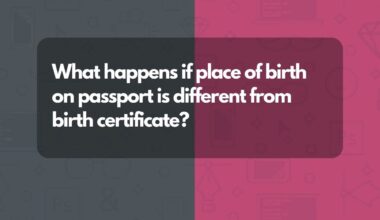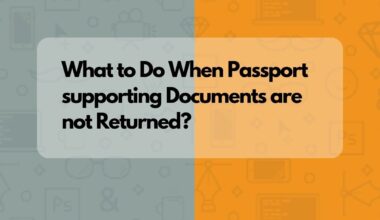As an Amazon Associate, I earn a small commission from qualifying purchases. Learn more about this.
Passports have long been a key for traveling, but in our current age (the advent of AI, perhaps), they’ve become far more than just a booklet of stamps.
Many modern passports now contain a tiny electronic chip, a repository of personal data, which we all know. But how can you access this information?
Whether you want to check if your passport chip works, get some information about your details, or just test the capabilities of a mobile phone, this article will cover the process of scanning your passport chip with your phone.
Can you Actually Scan Passport chip with Phone?
In order to answer this, we first need to understand what technology is used in these passport chips.
The chip embedded in your passport uses Radio Frequency Identification (RFID) technology, which allows information to be read wirelessly. This is the same technology used in contactless payment systems and electronic key cards.
Now, to the question: Can your phone read this chip?
Well, it depends on the capabilities of your phone. Many modern smartphones have the necessary hardware to read RFID chips, known as Near Field Communication (NFC) technology.
If your phone has NFC capabilities, technically, it can read the information on the passport chip.
However, there’s a caveat. The information on the chip is protected by a variety of security measures, including encryption and a process called Basic Access Control (BAC), which requires a key to unlock the data.
This key is derived from the Machine Readable Zone (MRZ) on the physical passport – a sequence of letters and numbers at the bottom of the passport page. Without this key, the information on the chip cannot be accessed.
Related: What is Considered a Damaged Passport?
How to scan Passport chip with Phone
Now, you might be wondering how you can actually do this. Because, of course, it’s a bit surprising. Well, let’s walk through the process together.
First and foremost, your phone must have Near Field Communication (NFC) capabilities.
NFC is a technology that allows two devices placed within a few centimeters of each other to exchange data. In the case of the passport chip, the NFC technology allows your phone to read the information stored on it.
Before we proceed, let’s be clear that you should only try to scan your own passport. Unauthorized access to someone else’s passport information is illegal and unethical.
With that understanding, let’s explore how to scan your passport chip with your phone:
- Download an NFC Reader App: You’ll need an app that can read NFC data. Numerous free and paid apps can do this, available on both Android and iOS platforms. Some popular ones include NFC TagInfo (Android and IOS), ReadID me (Android and IOS), and Passport NFC Reader (Android and IOS).
- Unlock Your Passport: As we discussed earlier, the information on your passport chip is secured using Basic Access Control (BAC). To unlock this, you’ll need to input your passport number, date of birth, and passport expiry date into the NFC reader app.
- Scan the Chip: Now, open your NFC reader app and follow its instructions to scan your passport. Typically, this involves holding the back of your phone against the photo page of your passport, where the chip is located.
Please note that while your phone may be able to read the chip’s contents, interpreting the data is another story.
Passport chips use a format called Logical Data Structure (LDS), which may not be easily readable in raw form. Some specialized apps can interpret this data, that’s why it’s important you use the app we recommended above.
Also, keep in mind that this will not work if your chip malfunctions or doesn’t’ work.
What you need to know about Scanning Passports with Phone
While scanning passport chips with your phone is technologically possible, keep in mind that the data you’re handling is sensitive.
When you scan your passport, you could be exposing personal information to third-party apps. While most of these apps promise high levels of security and encryption, there’s always a risk when dealing with online data.
Weigh the convenience against the risks before diving in.
Secondly, not all smartphones are created equal when it comes to NFC capabilities.
Some older models might not have the feature at all, while others might not have the necessary power or sensitivity to read passport chips effectively. It’s worth double-checking your phone’s specifications before you start.
Additionally, the data on passport chips is in a specific format known as Logical Data Structure (LDS), which isn’t easily understandable in raw form.
You’ll need a specialized app to interpret this data, and even then, it might not present all the details in a user-friendly way.
Lastly, scanning your own passport might be a cool tech experiment, but scanning someone else’s without their permission is a breach of privacy and could have legal implications. It’s essential to respect these boundaries and use this knowledge responsibly.
Wrapping up
While it’s technically possible for a phone with NFC capabilities to scan a passport chip, accessing the data is another story due to robust security measures. However, with the information provided above, you should have no problem doing this yourself.







